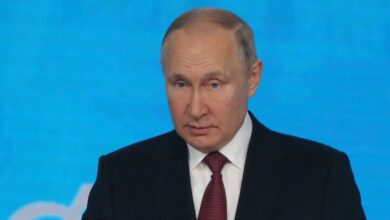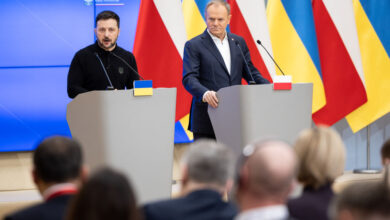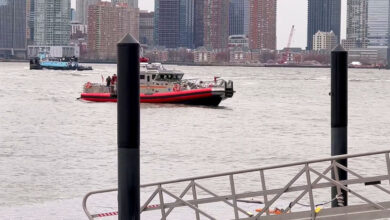How World Order Shapes Leadership and Legacy

What determines the emergence of iconic versus transactional leadership on the global stage? Why do certain leaders achieve mythic status across generations and geographies, while others fade into the footnotes of history despite wielding considerable power during their tenure? These questions have gained renewed urgency in light of escalating great-power rivalries, as the architecture of international order increasingly shapes the contours of domestic politics—producing divergent leadership types across national contexts, much as it did during the Cold War era. Conventional approaches tend to locate the roots of leadership in national circumstances—charisma, institutional capacity, ideology, or moments of crisis. Yet such analyses risk omitting a critical factor: the international system itself. This article argues that world order—defined as the prevailing structure of power and underpinnings institutions maintained by dominant actors—plays a decisive role in shaping leadership typologies (Baylis et al., 2020).
The structural imperatives of international order tend to produce two broad archetypes—icons and stewards. The former emerge in moments and spaces of systemic challenge, while the latter are cultivated to maintain systemic continuity. Both are responses to structure, but they embody divergent historical functions and legacies. The Cold War remains the most illustrative case of this dynamic. Its bipolar order not only structured alliances and ideological camps but also cultivated contrasting leadership models (Westad, 2005; Gaddis, 2005). The bloc representing systemic transformation—whether via socialism, anti-colonialism, or national liberation—tended to elevate visionary and revolutionary figures with global resonance. Meanwhile, the bloc defending liberal hegemonic status quo fostered technocrats, post-colonial elites, monarchs, and military leaders tasked with safeguarding continuity. This pattern did not originate in the Cold War, nor did it end with it. Instead, it is embedded in the longer-standing global divide between the ‘West and the Rest’—one that began with the Industrial Revolution, hardened through colonialism, and continues in new forms amid today’s great power competition (Hobson, 2012; Fanon, 1963). Despite the prominence of such transformative figures that emerged in throughout 20th century and the significant changes they catalyzed, they have not succeeded in dislodging the core architecture of the Western-dominated world order. That order—rooted in liberal institutions, global markets, and, most importantly, strategic alliances—has proven remarkably resilient.
Iconic leaders are not merely charismatic outliers but products of structural rupture—emerging from an international order that marginalized certain states and communities, and finding expression through political agency. Often rising from the social periphery—peasants, students, workers—they mobilized mass constituencies by linking popular suffering with narratives of national dignity and historical justice (Selbin, 2010). Their leadership derived symbolic power not only through defiance of global hierarchies but through the promise of systemic transformation and historic righting of wrongs. During the Cold War, figures such as Mao Zedong, Ho Chi Minh, Gamal Abdel Nasser, and Fidel Castro embodied both national liberation and ideological resistance to Western hegemony. Their movements framed sovereignty not as an end in itself but as part of a broader reordering of global balance of power. They became transnational symbols of emancipation, particularly within the Non-Aligned Movement and the wider ‘Third World’ struggle (Westad, 2005; Prashad, 2007).
Bottici (2007, pp. 4–7) contends, political myths serve as powerful instruments through which collective identity is constructed and mobilized. Revolutionary leaders did not merely lead movements—they crafted narratives in which personal biography became political symbolism, and ideological vision fused with national identity. These figures linked colonial subjugation with sovereign aspiration, transforming historical trauma—marked by foreign domination and economic marginalization—into redemptive projects of national rebirth. Yet myth alone could not sustain legitimacy. Its durability depended on being anchored in tangible outcomes. Mao’s land reforms, Castro’s literacy campaign, and Nasser’s control over the Suez Canal were instrumental in solidifying symbolic legitimacy.
In this light, China’s Communist Party remains instructive. It has institutionalized both the collective memory of national humiliation and the achievements of state-led development. This synthesis explains why, despite growing authoritarianism, the regime retains a degree of mass legitimacy (Perry, E. J. (n.d.); Cunningham, E., Saich, A., & Turiel, J. (2020) that transcends liberal assumptions of development bring political liberalization. Here, Symbolic power, when coupled with material delivery, enables revolutionary leadership to outlast the initial rupture.
Even after consolidating power at home, some of these leaders projected their revolutionary agendas abroad; Fidel Castro, for instance, dispatched Cuban forces to aid anti-colonial movements in Africa, elevating his status as a liberator beyond Cuba’s borders (Gleijeses, 2002). Backed by the Soviet bloc, these leaders represented not just national projects but a global challenge to the prevailing order (Prashad, 2007).
In contrast to the revolutionaries, Western-aligned leaders during the Cold War were stewards of continuity. These leaders—ranging from monarchs to military strongmen and postcolonial elites—were often chosen for their capacity to ensure geopolitical stability, block radical change, and preserve access to Western markets (Gaddis, 2005; Immerwahr, 2019). Their legitimacy was exogenous: bestowed through alignment with the liberal international order, not endogenous mobilization from below. Figures like the Shah of Iran, Mobutu Sese Seko in Zaire, or Ferdinand Marcos in the Philippines illustrate this pattern. Backed by Western powers to ensure continuity, these leaders often governed through repression, elite alliances, and economic dependence (Kornbluh, 2003; Chomsky, 1999). They rarely inspired lasting loyalty or symbolic reverence. When their regimes collapsed—often under pressure from the very societies they governed—they left behind few enduring political legacies.
Yet, it would be reductive to suggest that Western support produced only unpopular or short-lived leaders. When matched with broader systemic calculations of geopolitics, in some cases, it helped cultivate globally admired figures such as Lee Kuan Yew of Singapore. Though firmly aligned with the West, Lee combined technocratic discipline and meritocracy with visionary statecraft to lead Singapore from a struggling postcolonial port to a world-class economy. The West’s global strategy during the Cold War was not to create ideological icons but to prevent disruption. As the guardian of the liberal capitalist order, it favored predictability over transformation. Leaders were expected to maintain access to markets, suppress communism, and avoid instability. This role inherently limited their capacity to become national heroes (Schmidt, 2013). This distinction underscores a critical insight: iconic leadership is often born from resistance to systemic norms, while stewardship is rooted in their preservation. The former speaks to history; the latter to functionality.
What sets legendary leaders apart from transactional ones is their perceived historical role in moments of rupture—when political, social, and international structures shift dramatically. Leaders become legends not simply through defiance or charisma but by embodying a collective sense of emancipation. Their legacy resonates because they represent a political rupture aligned with deeper structural transformations in global order. Such leaders—whether Castro in Latin America or Nasser in the Arab world—crafted narratives that placed their movements within a broader story of global justice. They drew symbolic power not only from anti-imperialism but also from their capacity to inspire visions of national rebirth. These narratives endured because they delivered historic results hence were institutionally embedded in the public memory (James, 1989; Selbin, 2010).
The mythic dimension of leadership is amplified when it transcends the nation-state. Che Guevara’s iconography, for instance, resonates across ideological boundaries not merely for his actions but for his symbolism as a global resistor. Likewise, Thomas Sankara’s resurrection in African political memory reveals the emotional power of leadership that defies global subjugation, regardless of material success. In contrast, leaders who operate strictly within the frameworks of status quo rarely generate this mythic status. Their impact, while sometimes significant, is procedural rather than transformative. They manage continuity, implement policy, and maintain alliances, but seldom inspire generational reverence. Their contributions are often appreciated by international institutions but fail to enter the realm of national mythology (Chowdhry & Nair, 2004).
Becoming a legend, then, is not solely about moral virtue or developmental success. It is about aligning with a broader historical arc—about representing an aspiration that transcends the present. In unequal international structures by design, that aspiration often takes the form of defiance. As long as such structures persist, so too will the symbolic power of those who challenge them—not those who defend them.
While the ideological clarity of the Cold War has dissipated, the structural dynamics that differentiate icons from stewards endure. Today’s geopolitical landscape echoes in many ways the Cold War’s divides, though the ideological lines are blurrier. The United States and its allies continue to back regimes and leaders that support a liberal hegemonic order. China, Russia, and others present themselves as civilizational powers, critiquing the liberal order without offering a coherent systemic alternative (Coker, 2019). This limits their capacity to generate truly global icons, though it does not preclude symbolic leadership.
In Africa, parts of Asia, and Latin America, new generations still romanticize leaders who defy Western hegemony—even as they critique those leaders’ authoritarianism. China’s Belt and Road Initiative and Russia’s engagement in Africa mirror Soviet-era influence campaigns, offering certain degree of alternatives to Western conditionalities (Callahan, 2016). Russian analysts like Sergei Karaganov (2023) argue that global multipolarity is necessary for restoring balance in world politics and resisting Western ideological dominance.
Recent political shifts in countries like Burkina Faso, Mali, and Niger suggest that resistance-oriented leadership models are once again gaining traction. Leaders who promise national dignity and freedom from Western interference are gaining popularity, even when they offer few immediate material improvements. Protesters in Burkina Faso’s 2014 uprising carried portraits of Thomas Sankara—an anti-imperialist icon—highlighting how past revolutionaries continue to inspire contemporary movements. At the same time, leaders like Xi Jinping, Vladimir Putin, and Recep Tayyip Erdoğan have positioned themselves not only as national leaders but as civilizational icons—projecting ideological alternatives to Western liberalism through concepts such as ‘sovereignty,’ ‘traditional values,’ and ‘multipolarity.’ However, unlike the Cold War, this is not a battle of universal ideologies. There is no single alternative theory like Marxism-Leninism to rival liberal capitalism. While these leaders position themselves as challengers to Western dominance, they do not yet present a cohesive ideological bloc or a systemic replacement.
In essence, they contest the hierarchy of global order but not yet its fundamental rules. Thus, the Western-led liberal international order, though strained, continues to endure. In addition, even if they challenge the fundamentals of liberal hegemony with alternative model, whether that will bring different results than what world witnessed in 20th century with the collapse of Soviet Union, yet to be seen. Leadership does not arise in a vacuum. It is shaped, constrained, and enabled by the structure of international order. The Cold War exemplified a global logic that still holds: blocs that resist systemic norms produce iconic figures; blocs that uphold them generate competent stewards. These leadership archetypes are not merely about governance styles—they are reflections of the deep structure of world order.
The liberal international order, despite contestation, remains resilient. Yet its resilience does not negate the symbolic power of those who challenge it. Revolutionary leaders—even in failure—often shape the imagination of future struggles. Stewards, even in success, are rarely remembered beyond their terms. As great-power competition intensifies and new ideological rifts emerge, the interplay between structure and leadership will remain a defining feature of world affairs. The challenge lies in discerning not only who governs, but what their leadership symbolizes—and whether it signals continuity, rupture, or the possibility of a new world to come.
References
Amin, S. (1989) Eurocentrism, Monthly Review Press.
Baylis, J., Smith, S., & Owens, P. (2020) The globalization of world politics: An introduction to international relations(9th ed.), Oxford University Press. https://global.oup.com/academic/product/the-globalization-of-world-politics-9780192898142
Callahan, W. A. (2016) China dreams: 20 visions of the future, Oxford University Press. https://global.oup.com/academic/product/china-dreams-9780199896400
Bottici, C. (2007) A philosophy of political myth. (pp. 1–16). introduction, Cambridge University Press. https://www.cambridge.org/core/books/philosophy-of-political-myth/DD55F026E3450C1054AB2D92CD5FDB1C
Chomsky, N. (1999) The umbrella of U.S. power: The universal declaration of human rights and the contradictions of U.S. policy, Seven Stories Press. https://www.amazon.com/Umbrella-U-S-Power-Declaration-Contradictions/dp/1583225471
Chowdhry, G., & Nair, S. (Eds.). (2004) Power, postcolonialism and international relations: Reading race, gender and class, Routledge.
Coker, C. (2019) The rise of the civilizational state, Polity Press https://www.politybooks.com/bookdetail?book_slug=the-rise-of-the-civilizational-state–9781509534623
Cunningham, E., Saich, A., & Turiel, J. (2020) Understanding CCP resilience: Surveying Chinese public opinion through time (Policy Brief). Ash Center for Democratic Governance and Innovation, Harvard Kennedy School. Retrieved from https://ash.harvard.edu/sites/default/files/2020-07/2020_07_6_ChinaSurvey.pdf
Fanon, F. (1963) The wretched of the earth, Grove Press.
Gaddis, J. L. (2005) The cold war: A new history, Penguin Press. https://www.penguinrandomhouse.com/books/293667/the-cold-war-by-john-lewis-gaddis
Gleijeses, P. (2002) Conflicting missions: Havana, Washington, and Africa, 1959–1976, University of North Carolina Press.
Hobson, J. M. (2012) The Eurocentric conception of world politics: Western international theory 1760–2010, Cambridge University Press. https://www.cambridge.org/core/books/eurocentric-conception-of-world-politics/A2ECFA177E0199DADDCDBBD0295DF33D
Immerwahr, D. (2019) How to hide an empire: A history of the greater United States. Farrar, Straus and Giroux. https://us.macmillan.com/books/9781250251091/howtohideanempire
James, C. L. R. (1989) The black Jacobins: Toussaint L’Ouverture and the San Domingo revolution, Vintage. https://www.penguinrandomhouse.com/books/86417/the-black-jacobins-by-c-l-r-james-with-a-new-introduction-by-david-scott
Karaganov, S. (2023) A difficult but necessary decision. Russia in Global Affairs, June.
Kornbluh, P. (2003) The Pinochet file: A declassified dossier on atrocity and accountability, The New Press. https://thenewpress.com/books/pinochet-file
Nkrumah, K. (1965) Neo-colonialism: The last stage of imperialism, Thomas Nelson.
Prashad, V. (2007) The darker nations: A people’s history of the third world, The New Press. https://thenewpress.com/books/darker-nations
Perry, E. J. (n.d.) Is the Chinese Communist regime legitimate? Unpublished manuscript, Department of Government, Harvard University. https://scholar.harvard.edu/files/elizabethperry/files/perry_is_the_chinese_communist_regime_legitimate_v2_jr_edits.pdf
Schmidt, E. (2013) Foreign intervention in Africa: From the cold war to the war on terror, Cambridge University Press. https://www.cambridge.org/core/books/foreign-intervention-in-africa/3A3D6A6E9A6F6F
Selbin, E. (2010) Revolution, Rebellion, Resistance: The Power of Story, Zed Books. https://www.bloomsbury.com/us/revolution-rebellion-resistance-9781848137738
Westad, O.A. (2005) The Global Cold War: Third World Interventions and the Making of Our Times, Cambridge University Press. https://www.cambridge.org/core/books/global-cold-war/75870878657DC67E0BC70FA7D2388494
Further Reading on E-International Relations
https://www.e-ir.info/wp-content/uploads/2025/04/shutterstock_2221051871.jpg
2025-04-08 13:11:40




